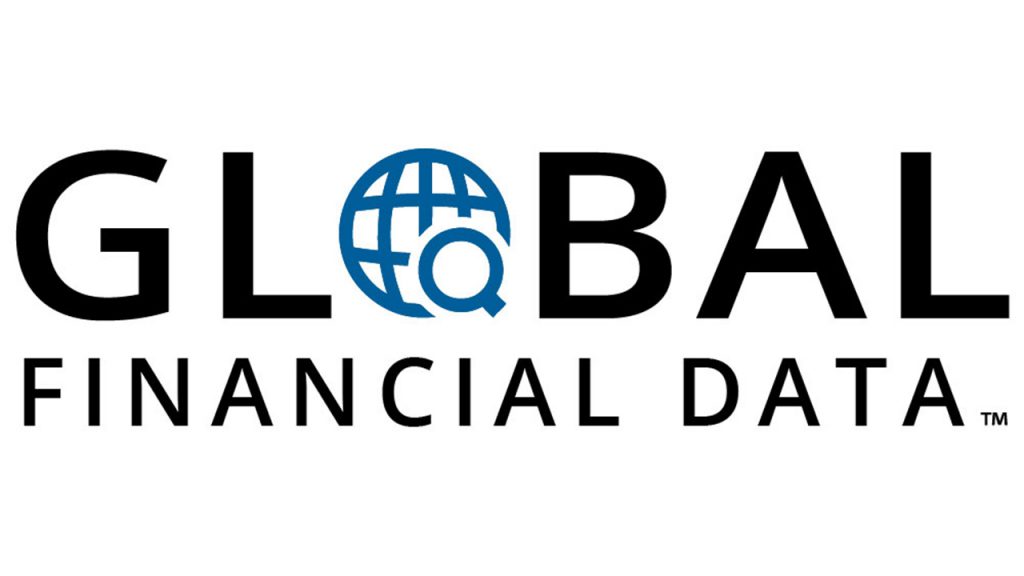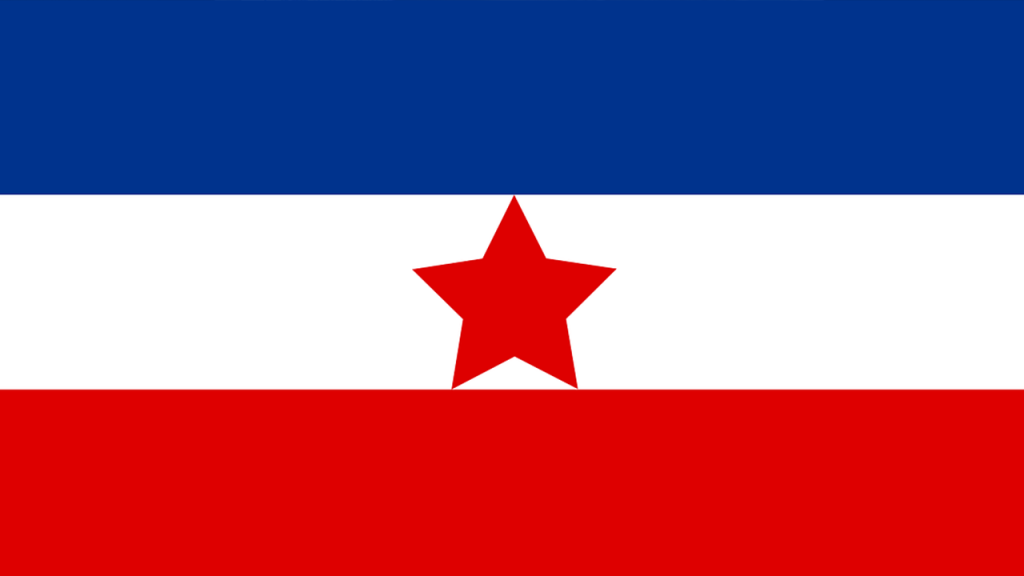 Global Financial Data has stock histories for over 50,000 securities. Some of these stocks cover centuries of data; others are quite short, lasting only a few months or even a few days. One of the most interesting of these is Wilt Chamberlain’s Restaurants, Inc. for which there are only two days of data.
Global Financial Data has stock histories for over 50,000 securities. Some of these stocks cover centuries of data; others are quite short, lasting only a few months or even a few days. One of the most interesting of these is Wilt Chamberlain’s Restaurants, Inc. for which there are only two days of data.
Wilt the Stilt
Wilt Chamberlain was one of the greatest, some would argue the greatest, basketball players in history. He holds 71 NBA records, and he is the only person to score 100 points in a single game. He averaged more than 40 to 50 points per game in some seasons, and in one season he played every minute of every game. Chamberlain was 7-foot 1-inch and played for the University of Kansas, Harlem Globetrotters, the Philadelphia/San Francisco Warriors, Philadelphia 76ers and the Los Angeles Lakers. He dominated the NBA between 1959 and 1973 and left a legacy that few can match. After Chamberlain left the NBA, he promoted the short-lived International Volleyball Association, wrote a book, appeared in the movie Conan the Destroyer, and tried several business ventures. One of these was Wilt Chamberlain’s Restaurants, Inc. Wilt Chamberlain’s restaurant opened on December 20th, 1990 in Boca Raton, Florida. The restaurant was a sports-themed, casual-dining family restaurant. The goal of the restaurant was fine food and service for families, a sports bar for drinkers and an entertainment complex for kids of all ages. The restaurant had over fifty televisions broadcasting sports events for its patrons as well as a basketball court and hoops where customers could shoot a few shots while enjoying their drinks or waiting for a table. The restaurant had a live arcade with over 40 games, and a redemption center where customers could either cash in their tickets or purchase sports-related goods.The IPO that went PU
The restaurant was successful, so in 1992, Wilt Chamberlain decided to go public. The Hard Rock Café had begun its expansion in 1982 and in 1991 Planet Hollywood was founded by Sylvester Stallone, Bruce Willis, Demi Moore and Arnold Schwarzenegger. There was no reason why a sports-themed restaurant shouldn’t succeed as well, but to do so Wilt Chamberlain would need more capital. Chamberlin contracted with New York-based brokerage Meyers, Pollock, Robbins Inc. to go public. The goal was to raise $8 million through the initial public offering (IPO) in order to fund the restaurant’s expansion. The company filed an SB-2 registration in which the brokerage firm said they would offer 1.4 million shares, priced at $6 to $8. The company was had reported a profit of $222,706 for the nine months ended Sept. 30, 1992. Wilt Chamberlain signed an agreement to allow his name, likeness and persona to be used in connection with marketing the company. Although there was only one Wilt Chamberlain restaurant at the time, the company had plans to open additional restaurants across the United States and possibly worldwide. The company would trade under the symbol WILT. Unfortunately, the IPO was a disaster. Although Meyers, Pollock, Robbins, Inc. had been in business for 50 years, they had never underwritten an IPO. Their inexperience contributed to the fiasco, and they botched the placement completely. Most investment bankers will guarantee the IPO price for 30 days after the debut, but shares in Wilt Chamberlain Restaurants, Inc. stayed above the offering price for only a few minutes. Wilt Chamberlain Restaurants, Inc. went public at $7 a share on Thursday, February 11, 1993. The first trade in the stock was at $7.50, but the price fell to $6.75 a few minutes later. Over one million shares traded on its opening day, and the stock price closed at $6, $1 below the IPO price. This brought on short-sellers when it was apparent the firm could not or would not support the stock. By the next day, the stock closed at $4.625 a share. Everyone who owned stock in the company was losing money, many of whom were clients of Meyers, Pollock, Robbins, Inc.IPO Money on the Rebound
Meyers, Pollock, Robbins, Inc. had gauged the price of the stock inaccurately and were unable to support the stock when it fell below its offer price. Over the weekend, the company and the underwriter huddled to figure out a strategy for their failed IPO. Before trading began on Tuesday, Meyers, Pollock, Robbins, Inc. announced that they would cancel the public offering. The underwriter had the legal right to do this because an IPO can be cancelled if the shares have not been distributed and no trades have settled. Global Financial Data has added new graphing tools to its website to enhance our customers’ ability to study our extensive database. The new graphing tools make it easier to visualize our data. In addition, GFD has added new techniques to understand the underlying data. To access the new tools, click on the Finaeon Graphs tab at the top of the user interface.
The Finaeon graphs provide a new, easy-to-use format that enables you to make numerous changes to the graph at once. Simply choose the changes in the settings you want and click on the Graph button. You can make changes to the duration, the type of graph, the periodicity, the currency, the scaling, add moving averages, show splits and dividends and adjust for inflation all at once. You can change all or your settings again, hit reset and start from scratch, or enter a new symbol to graph the data in a new file or stock.
In addition to improved ease of use, new tools have been added to the Finaeon Graphs. The comparison tools have been improved to allow multiple comparison of different files on the same graph. You can make a direct comparison, indirect comparison, compare files using different scaling, or compare files on a percentage basis. You can also divide different indices, such as large-cap and small-cap indices, to see how they have performed relative to one another, or you can subtract the yield on a 10-year bond and a 3-month T-bill to create your own interest rate spread.
Global Financial Data has added over two dozen new technical indicators to help you analyze individual stocks, indices and other files in the GFDatabase. Included in the new technical indicators are Bollinger Bands, Chaikin Oscillator, Williams R, Commodity Channel Index and others.
The new Finaeon graphs are designed to improve ease of use and provide new tools to analyze the 200,000 files that GFD now offers its clients. Please feel free to test the new graphs on your own, or if you would like a demonstration of the new graphs, please call today to speak to one of our experts at <ahref="tel:18773282999">877-DATA-999 or 949-542-4200.</ahref="tel:18773282999">
Global Financial Data has added new graphing tools to its website to enhance our customers’ ability to study our extensive database. The new graphing tools make it easier to visualize our data. In addition, GFD has added new techniques to understand the underlying data. To access the new tools, click on the Finaeon Graphs tab at the top of the user interface.
The Finaeon graphs provide a new, easy-to-use format that enables you to make numerous changes to the graph at once. Simply choose the changes in the settings you want and click on the Graph button. You can make changes to the duration, the type of graph, the periodicity, the currency, the scaling, add moving averages, show splits and dividends and adjust for inflation all at once. You can change all or your settings again, hit reset and start from scratch, or enter a new symbol to graph the data in a new file or stock.
In addition to improved ease of use, new tools have been added to the Finaeon Graphs. The comparison tools have been improved to allow multiple comparison of different files on the same graph. You can make a direct comparison, indirect comparison, compare files using different scaling, or compare files on a percentage basis. You can also divide different indices, such as large-cap and small-cap indices, to see how they have performed relative to one another, or you can subtract the yield on a 10-year bond and a 3-month T-bill to create your own interest rate spread.
Global Financial Data has added over two dozen new technical indicators to help you analyze individual stocks, indices and other files in the GFDatabase. Included in the new technical indicators are Bollinger Bands, Chaikin Oscillator, Williams R, Commodity Channel Index and others.
The new Finaeon graphs are designed to improve ease of use and provide new tools to analyze the 200,000 files that GFD now offers its clients. Please feel free to test the new graphs on your own, or if you would like a demonstration of the new graphs, please call today to speak to one of our experts at <ahref="tel:18773282999">877-DATA-999 or 949-542-4200.</ahref="tel:18773282999">
September 18, 2014, Scotland will vote on whether to remain part of the United Kingdom or leave. If Scotland were to vote for independence, they would have to decide whether to have a separate currency from England, the Scottish Pound, and whether to have their own central bank. Would England and an independent Scotland share a currency union with England possibly playing the role of Germany and Scotland that of Greece? Or would Scotland set up its own currency?
Although it would be advantageous for Scotland to have a currency union with England, based upon the statements of political leaders in both countries, England and Scotland would have different fiscal policies. Most evidence points to Scotland having higher deficits in the future relative to England because of declining revenues from North Sea oil, an aging population and the fact that Scotland currently runs a larger deficit than England does. Scotland issued its own pound coins until it was united with England in 1707 and English coins became the medium of exchange in Scotland. Scotland issued pennies based upon the English system of 20 Shillings and 240 pence when David I (1124-1153) minted silver pennies in imitation of English coins. Scottish coins usually had a profile bust of the king while English coins had a facing bust. Gold coins were introduced by David III around 1350. Scottish coins and British pennies had equal amounts of silver until 1367 when Scotland began to debase their pennies. Under the Stuarts (1371-1714), Scotland issued coins that differed from those of England. Gold lions (20 shillings) and crowns (22 shillings), silver groats (4 shillings) testoons (4-5 shillings) and ryals (30 shillings) as well as bawbees (6 pence), placks (4 pence) and pennies. By 1707 when Scotland and England were united, 1 Pound Sterling was equal to 12 Pounds Scots because of greater debasement of coins in Scotland than in England. However, since Scottish coins were often in short supply, English, Dutch, Flemish and French coins also circulated in Scotland. The Bank of Scotland was founded on July 17, 1695, was given a monopoly over banknote issue, and soon began issuing banknotes. A failure by the Bank of Scotland to renew its monopoly, allowed the Royal Bank of Scotland, founded in 1727, to begin issuing its own banknotes. Several other banks gained right of issue in Scotland after 1746. Scottish banks can issue up to the amount of issue in 1845 without any backing (about 3 million Pounds). All other issues require backing at the Bank of England. Scottish banknotes have never been legal tender, but have always been a legal currency. As a result of bank mergers, the number of banks issuing banknotes in Scotland has declined from ten to three (Bank of Scotland, Clydesdale Bank PLC and Royal Bank of Scotland PLC). If Scotland were to create a separate currency from the British Pound Sterling, it would need to determine whether the three note-issuing banks in Scotland could continue to issue their own notes, or whether they would be replaced by notes issued by a Central Bank of Scotland. Scotland would have a year and a half between the vote on September 18 and May 2016 when Scotland would regain its independence to make this decision. If Scotland decided to have a separate currency, it could still allow for a transition period after May 2016, but unless Scotland followed a fiscal policy similar to that of England, the new Scottish Pound would inevitably depreciate relative to the British Pound Sterling just as the old Scottish Pound had depreciated before the Union of Scotland and England was formed in 1707. That would not be good for the future of Scotland.
 In a previous blog, I documented the worst hyperinflation in history, which was suffered by Hungary in 1946. When Hungary finally converted from the Pengo to the Forint, it took 400,000 Quadrillion Pengö to get one Forint! Yugoslavia failed to beat Hungary’s record, but if Yugoslavia failed to win the gold in the Inflation Olympics, it wasn’t for lack of trying. You can probably blame one person, Slobodan Milošević for the collapse not only of the country’s currency and economy, but for the country itself.
In a previous blog, I documented the worst hyperinflation in history, which was suffered by Hungary in 1946. When Hungary finally converted from the Pengo to the Forint, it took 400,000 Quadrillion Pengö to get one Forint! Yugoslavia failed to beat Hungary’s record, but if Yugoslavia failed to win the gold in the Inflation Olympics, it wasn’t for lack of trying. You can probably blame one person, Slobodan Milošević for the collapse not only of the country’s currency and economy, but for the country itself.
A Socialist Country that Relied on the Market
Yugoslavia was an amalgam of different countries when it was formed after World War I, and its original name, the Kingdom of the Serbs, Croats and Slovenes indicated its origins. After World War II, Yugoslavia’s dictator, Josip Broz Tito, distanced himself from the Soviet Union in 1948 and sought his own path for Yugoslavia. The country played a unique role during the cold war. Yugoslavia was a socialist country that relied upon the market to allocate goods. Some economists looked upon Yugoslavia positively as a country that had found the middle ground between the socialism of the Soviet bloc and the capitalism of the West. Unfortunately, this middle ground worked better in theory than in practice.
War, Sanctions and Hyperinflation
Slobodan Milošević became the President of Serbia on May 8, 1989. Though his goal was to restore Serbian supremacy in Yugoslavia, he was instrumental in destroying Yugoslavia. The collapse of the country may have been inevitable, but the collapse of the economy and currency were not. In January 1991, Slobodan Milošević ordered the Serbian National Bank to issue $1.4 billion in credit to his friends. After Milošević resigned from power, he would be charged with corruption and embezzlement because of this and other actions. In 1992, the United Nations imposed sanctions on what was left of Yugoslavia as a result of the carnage that was occurring in Bosnia and Herzegovina. Consequently, both GDP and fiscal revenue declined while the cost to Milošević of fighting his wars with Yugoslavia’s former republics rose. Milošević had already raided the Serbian National Bank and by this time, most of the country’s hard currency was gone. The sanctions hit Yugoslavia hard, and its financial resources dried up. Milošević saw only one solution to survive: print money. Inflation was nothing new to Yugoslavia. Yugoslavia had suffered double-digit inflation in every year save one between 1969 and 1986. Inflation rose to even higher levels after 1985, moving from 87% in 1985 to 162% in 1987 and to 2719% in 1989. When the United Nations imposed sanctions on Yugoslavia in 1992, the country quickly collapsed into hyperinflation. Prices increased 17,200% in 1992, and an incredible 3 quadrillion percent in 1993. Inflation was 1788% in December 1993 and 4139% in January 1994, though one wonders how the government arrived at such exact figures. The hyperinflation finally ended in March 1994, and by 1995, the annual inflation rate was a more “normal” 122%.
The Government Tries to Regulate Inflation but Causes the Economy to Collapse
In November 1993, the government delayed turning on the heat in government-owned apartment buildings in order to save money, so the buildings’ tenants bought inefficient space heaters which overloaded the electrical system leading to blackouts. Pensioners and other Yugoslavs delayed making payments for government services, knowing that even a few days’ delay would wipe out the cost of making any payments. In short, the economy collapsed. As the inflation got worse, businesses began using Deutsche Marks instead of Yugoslav Dinars to avoid losing money from the continual erosion in the value of the Dinar. To keep up with the inflation, Yugoslavia had to continually issue new currencies to get rid of the zeroes that were piling up. On January 1, 1990, a new Dinar replaced the old Dinar at the rate of 10,000 to 1, in July 1992 another Dinar was introduced at the rate of 10 to 1, and in October 1993 another new Dinar was introduced at the rate of 1 million old Dinar to 1 new Dinar. In January 1994 the 1994 Dinar was introduced at the rate of 1 billion 1993 Dinar to 1 1994 Dinar, which was replaced in turn by the Super Dinar at the rate of 12,500,000 to 1 in less than a month. In one year, between December 1992 and December 1993, the effective exchange rate between the Yugoslav Dinar and the US Dollar had gone from 900 Dinars to the US Dollar to 3 billion million million Dinars (3 sextillion for anyone who cares) to the US Dollar. In February 1994, 1 new Super Dinar was equivalent to 1.2 Octillion (1.2 billion billion billion, i.e. 27 zeroes) Dinars from 1989.
Milošević Is Kicked Out of the Country He Destroyed
In his own way, Slobodan Milošević was probably one of the greatest counterfeiters of all time, and though Slobodan Milošević may not have suffered the death penalty for his destruction of Yugoslavia’s currency and economy, at least he spent the rest of his life in prison for his crimes.



